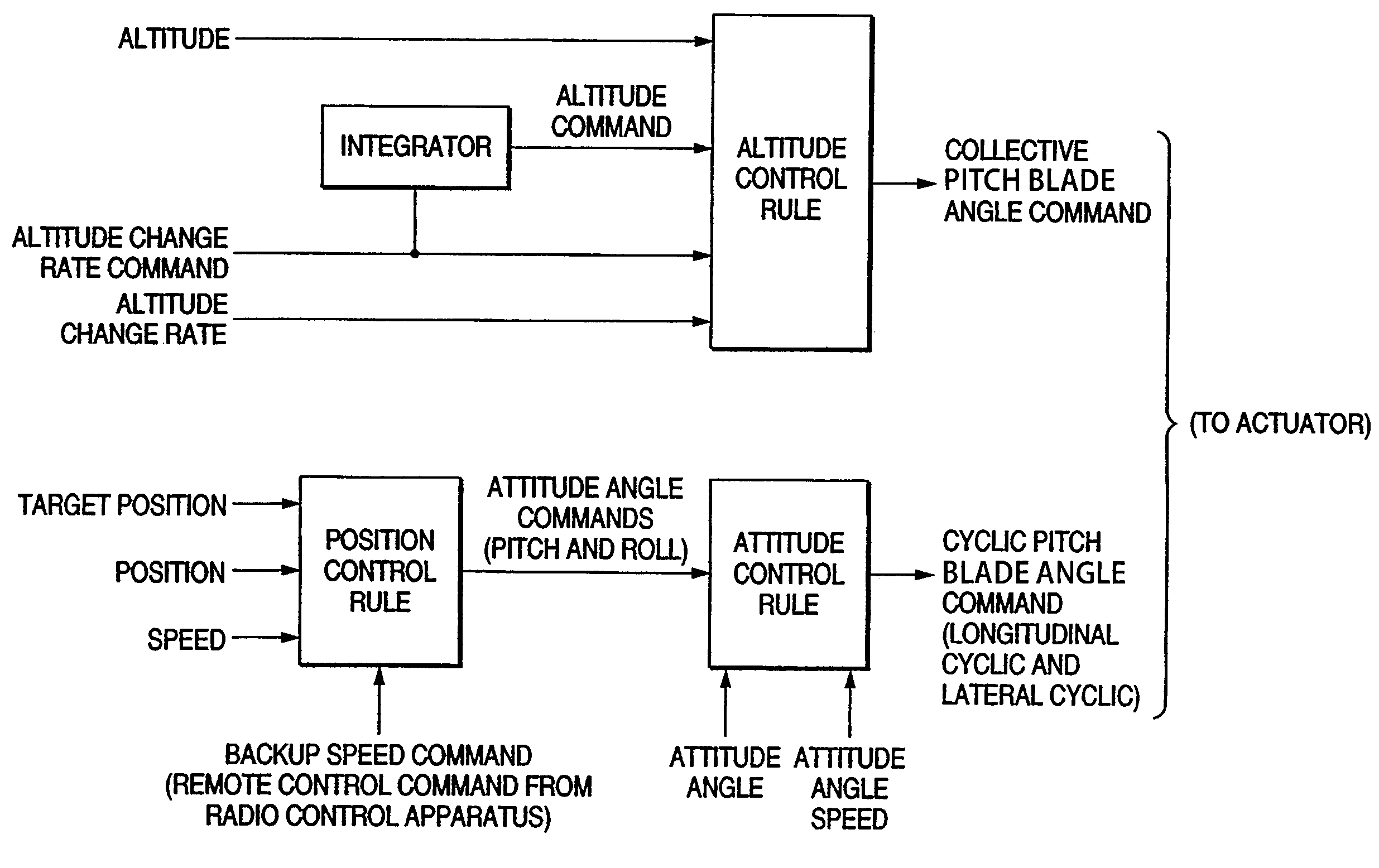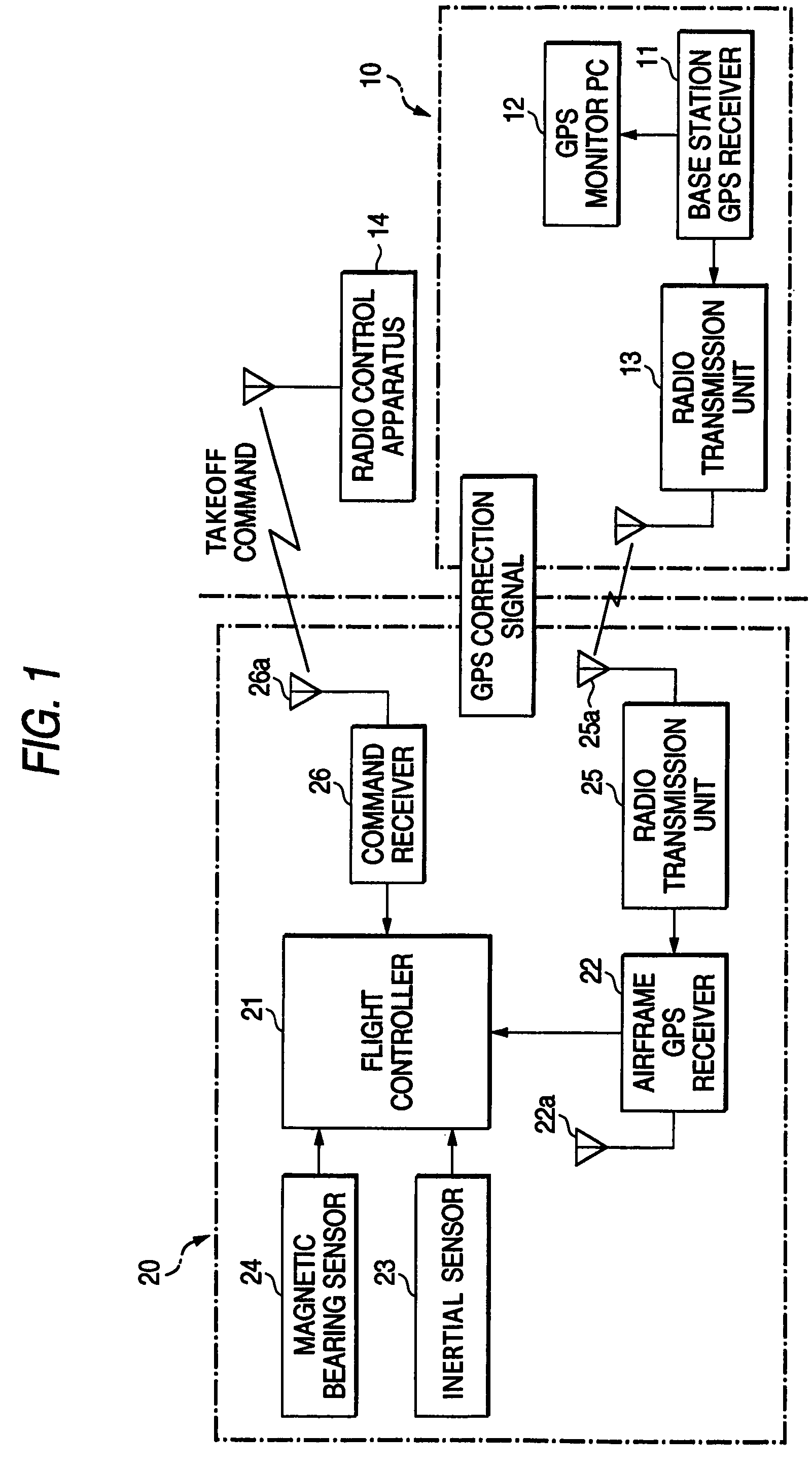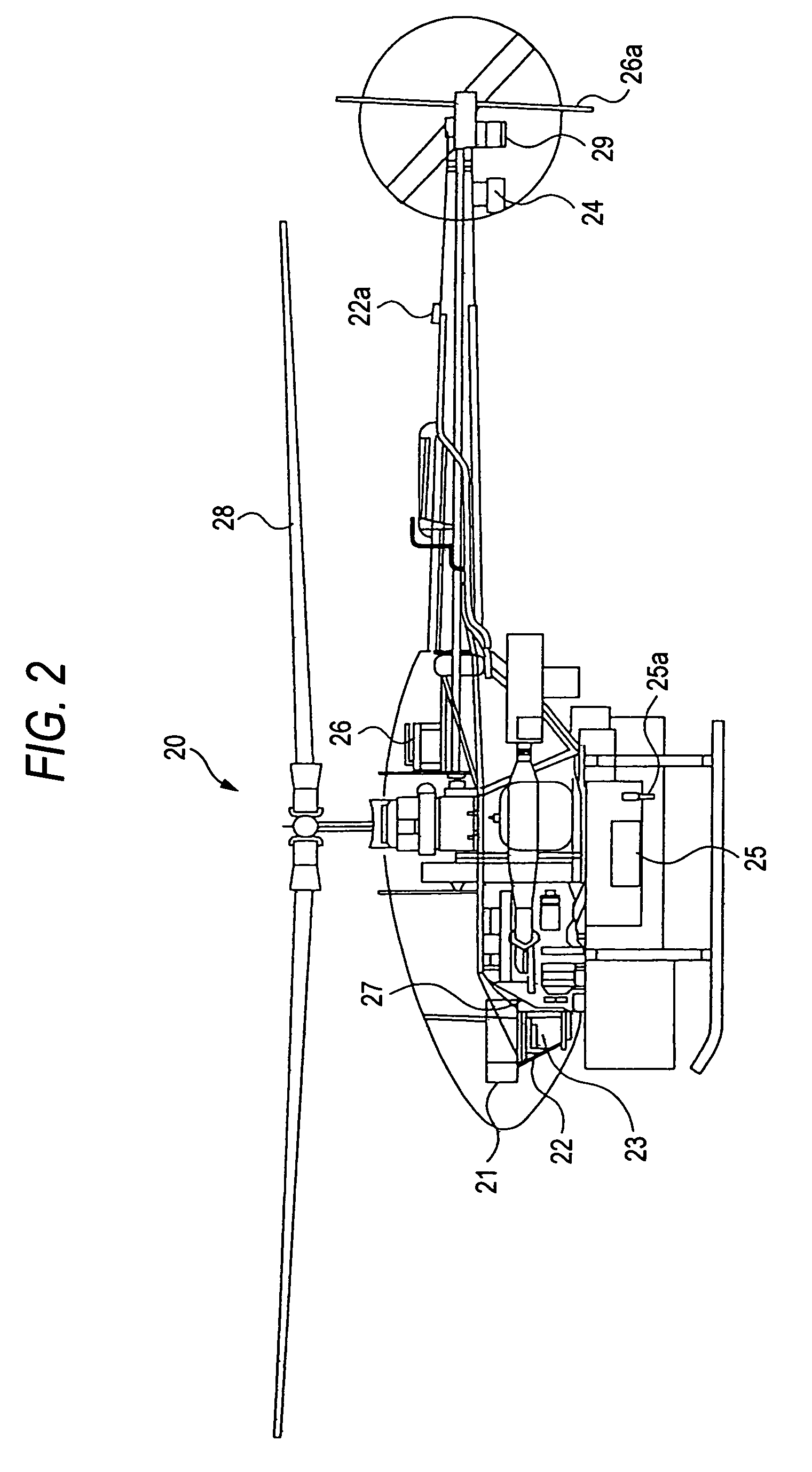Unmanned helicopter, takeoff method of unmanned helicopter, and landing method of unmanned helicopter
a technology of unmanned helicopters and helicopters, which is applied in the direction of vehicle position/course/altitude control, process and machine control, instruments, etc., can solve the problems of airframes that may start moving, airframes that may roll in some cases, and complicating software configuration, so as to suppress a cost increase and ensure automatic takeoff and landing
- Summary
- Abstract
- Description
- Claims
- Application Information
AI Technical Summary
Benefits of technology
Problems solved by technology
Method used
Image
Examples
Embodiment Construction
[0040]Referring now to the accompanying drawings, there is shown a preferred embodiment of the invention.
[0041]In the embodiment, a flight control system including an unmanned helicopter according to the invention will be discussed. To begin with, the configuration of a flight control system 1 according to the embodiment will be discussed with FIGS. 1 and 2. FIG. 1 is a block diagram to describe the configuration of the flight control system 1. FIG. 2 is a schematic drawing to describe the configuration of an unmanned helicopter 20 in the flight control system 1.
[0042]The flight control system 1 according to the embodiment includes a ground system made up of a base station 10 and a radio control apparatus 14 installed on the ground and the unmanned helicopter 20 and performs operation control of the unmanned helicopter 20 based on a predetermined control command transmitted from the radio control apparatus 14.
[0043]The base station 10 includes a base station GPS receiver 11 for rece...
PUM
 Login to View More
Login to View More Abstract
Description
Claims
Application Information
 Login to View More
Login to View More - R&D
- Intellectual Property
- Life Sciences
- Materials
- Tech Scout
- Unparalleled Data Quality
- Higher Quality Content
- 60% Fewer Hallucinations
Browse by: Latest US Patents, China's latest patents, Technical Efficacy Thesaurus, Application Domain, Technology Topic, Popular Technical Reports.
© 2025 PatSnap. All rights reserved.Legal|Privacy policy|Modern Slavery Act Transparency Statement|Sitemap|About US| Contact US: help@patsnap.com



